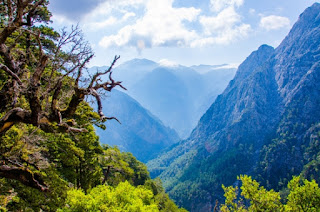Greece is a country where traditions and customs are a part of modern, everyday life. Most holidays in Greece are celebrated traditionally, and Christmas in no exception.
Christmas caroling is very popular, and although you might hear any songs being sung at any given moment during the holiday season, there are actually three “official” caroling days in Greece.
The custom is that children go from house to house singing carols, with the accompaniment of a triangle, and residents of the houses give them small amounts of money. Greek Christmas carols (“calanda”) are always sung on the mornings of Christmas Eve, New Year’s Eve and January 5, the Eve of the Epiphany.
Caroling has been a part of Christmas celebrations in Greece for two thousand of years. In fact, it has its roots going back even further, to ancient Greece, where children would carry small boats and sing songs honoring Dionysius.
The tradition of praising the head of the household also began in ancient Greece.
In addition to singing songs to honor their god, they would also bestow the household with a gift of an olive branch, which also signified prosperity.
Amazingly, many elements of this ancient tradition still exist today. Children often do still hold decorated wooden boats while singing the carols. And the sentiment is also the same – they wish the homeowners health, wealth, and prosperity by what they sing.
Different regions of Greece have their own versions of Christmas carols. Here is a sample of carols from the island of Crete:
(Source: thegreekobserver)
Christmas caroling is very popular, and although you might hear any songs being sung at any given moment during the holiday season, there are actually three “official” caroling days in Greece.
The custom is that children go from house to house singing carols, with the accompaniment of a triangle, and residents of the houses give them small amounts of money. Greek Christmas carols (“calanda”) are always sung on the mornings of Christmas Eve, New Year’s Eve and January 5, the Eve of the Epiphany.
Caroling has been a part of Christmas celebrations in Greece for two thousand of years. In fact, it has its roots going back even further, to ancient Greece, where children would carry small boats and sing songs honoring Dionysius.
The tradition of praising the head of the household also began in ancient Greece.
In addition to singing songs to honor their god, they would also bestow the household with a gift of an olive branch, which also signified prosperity.
Amazingly, many elements of this ancient tradition still exist today. Children often do still hold decorated wooden boats while singing the carols. And the sentiment is also the same – they wish the homeowners health, wealth, and prosperity by what they sing.
Different regions of Greece have their own versions of Christmas carols. Here is a sample of carols from the island of Crete:











